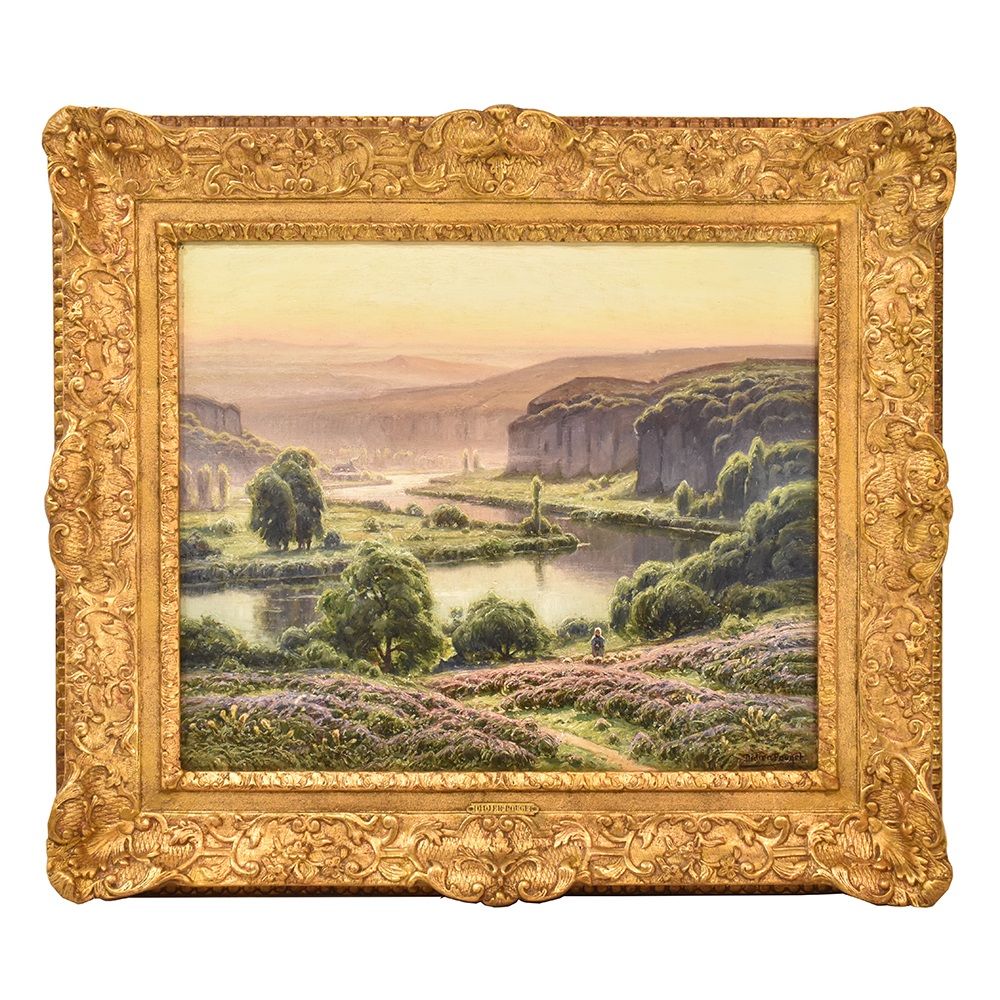William Didier-Pouget

William Didier-Pouget (Toulouse 14 November 1864 – Digulleville 12 September 1959) was a French artist, born in 1864, Toulouse, France, known for his landscape paintings.
He focused primarily on the countryside of southern France, infusing his landscapes, always painted outdoors (en plein air), with light and color. Didier-Pouget is associated with the later phase of Impressionism, although not actually identified with the group of artists typically known as the Impressionists.
His Life
William Didier-Pouget was the son of a newspaper editor, Antoine Paul Jules Edgar Pouget, a nature lover, who encouraged William in his ambition to become an artist. He studied at the École des Beaux-Arts of Toulouse, at the Académie de Paris with Amédée (Jean Amédée) Baudit (1826-1890) and he made his debut at the Salon de Paris in 1886. Then, he studied with Louis-Augustin Auguin, an associate of Gustave Courbet and Jean-Baptiste Corot.
Painting career
In Toulouse, the young artist had already been regarded as a prodigy of talent.
Encouraged, Didier-Pouget moved to Paris; a wise step for his career. From 1886 he exhibited regularly at the Salons, each new season showing a marked advancement in his art, "bringing to the world of Paris new and delightful colour-schemes and vivid compositions". (Dewhurst, 1904).
During his early years Didier-Pouget's landscape paintings were temperate with a poetic atmosphere. Progressively he began to specialize in a style which would build his considerable reputation with many commissioned works. The artist took pleasure in expressing the ambiance of river scenes. The soft poesy of his mountainous landscapes are suggestive of Auguin, a disciple of Corot. The importance he gave to the trees is eloquent: in his opinion, they represent the opacity of the earth in contrast to the transparency of the sky. He loved painting just after sunset or before the sunrise.
"His scenes of heather bathed in sunshine or glistening with the dew of an autumnal sunrise are rendered with an exceptional verisimilitude, strength, and truth", wrote Dewhurst in 1901.
Didier-Pouget was named Chevalier de la Legion d'Honneur 15 January 1901 and he received his decoration as Chevalier de la Legion d'Honneur 28 February 1901. He exhibited at various venues and won the gold medal at the Exposition universelle et internationale (1913). He was subsequently selected as a member of the Jury and became a senior member of the Société des Artistes Français. On 18 July 1933 Didier-Pouget was promoted to Officier de la Legion d'Honneur by the President of the Third Republic, Albert François Lebrun (President of France from 1932 to 1940).
The artist died in Digulleville, France in 1959.




